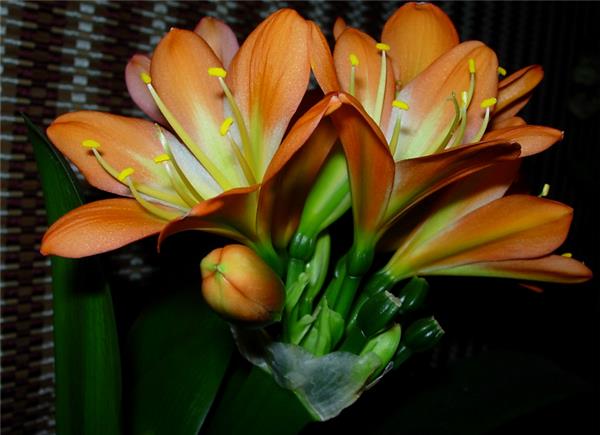Maintenance methods of Magnolia
The gentleman orchid likes the warm, cool environment, has the certain cold resistance, next we take a look at the gentleman orchid maintenance method.

Maintenance methods of Magnolia
Magnolia is native to the tropical regions of southern Africa and grows under trees, so it is not only afraid of heat but not cold-resistant, like semi-shady and humid environment, afraid of strong direct sunlight, the best temperature for growth is between 18 and 28 ℃, below 10 ℃, above 30 ℃, and growth is inhibited. The gentleman orchid likes the ventilated environment, likes the deep, fertile and loose soil, and is suitable to grow in the loose and fertile slightly acidic organic matter soil. Magnolia is a famous greenhouse flower, which is suitable for indoor cultivation.

When raising magnolia, you should pay attention to the following points:
Select soil-the root of Cymbidium belongs to fleshy root, which is suitable for growing in loose, fertile and slightly acidic soil with good air permeability, so the soil for cultivating Cymbidium should meet the above requirements.
Watering-the principle of watering is not to water, but to water thoroughly. Do not water a little at a time, that kind of superficial practice, the gentleman orchid is particularly harmful. In addition, pay attention to the watering time, preferably in the morning or evening, at noon in summer, the temperature is very high, not suitable for watering, there is another point is that watering should avoid the flower heart, so as not to cause bad heart.
Fertilization-there is no doubt that fertilizer is an essential source of nutrients for the vigorous growth of plants. Of course, Magnolia is no exception, it also likes fertilizer to provide nutrition. The fertilization of Cymbidium should be based on the size, variety, growth and development of Cymbidium. Too much fertilizer or too little fertilizer will not work. Too much will lead to root burning, too little, lack of nutrition, leaves obviously narrower, and not straight.

Lighting-Magnolia is a ring-wetting plant, suitable for growing in high humidity, but does not require high light, as long as the temperature is suitable, the light time is longer or shorter. Although good lighting can ensure the bright color of the gentleman orchid, it still likes a slightly weaker light, so be sure to avoid strong light.
Pour the basin-when the gentleman orchid grows up, you need to change a big basin for it, that is, "pour the basin and change the soil". The best time to change soil is in spring and autumn, because the orchid grows vigorously at this time and will not affect the growth of the plant. The most important thing to change soil is to fill the root with soil, otherwise if there is no soil in the root, then water and nutrients will not reach the root, which is easy to cause rotten root.

A little knowledge of breeding magnolia
Magnolia belongs to Amaryllidaceae, which is a perennial evergreen herb. The leaves are broad and band-shaped, hard and thick in texture, shiny and veined.
The flower of the gentleman orchid is not as magnificent as the peony, nor the fragrant Lang of the Rongli flower, let alone the splendor of the rose, but it has sword-like green leaves, thick and bright; fire-like red flowers, pavilions open, red and green reflect each other, is an ideal potted flower to beautify the environment.
Moreover, the magnolia plant, especially the broad and thick leaves, has a lot of stomatal villi, which can secrete a lot of mucus. Through air circulation, it can absorb a lot of dust, smoke and harmful gases, filter indoor air and make the air clean.
Magnolia is native to southern Africa and grows under big trees, so it is not only afraid of heat but not cold-resistant, likes a semi-shady and humid environment, is afraid of strong direct sunlight, likes a ventilated environment, and is suitable for indoor culture. it is an ideal precious flower in buildings, halls, pavilions and families.
Related
- Wuhan Hospital Iron Tree Blooming Result Was Instantly Frightened by the Gardener Master
- Which variety of camellia is the most fragrant and best? Which one do you like best?
- What is the small blue coat, the breeding methods and matters needing attention of the succulent plant
- Dormancy time and maintenance management of succulent plants during dormancy
- Minas succulent how to raise, Minas succulent plant pictures
- What are the varieties of winter succulent plants
- How to raise succulent plants in twelve rolls? let's take a look at some experience of breeding twelve rolls.
- Attention should be paid to water control for succulent plants during dormant period (winter and summer)
- Watering experience of twelve rolls of succulent plants
- Techniques for fertilizing succulent plants. An article will let you know how to fertilize succulent plants.



